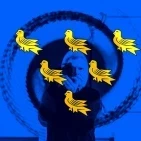All Activity
- Past hour
-
Thank you for sharing this. I have no experience with Leica service. I am accustomed to Canon, which is excellent. But Leica is a much smaller firm.
-
.thumb.jpg.453e29217325d25605a012f22452719b.jpg)
Warum tut sich Leica mit Mittelformat so schwer?
wpo replied to Ricarda's topic in Leica Kundenforum
Du weißt aber schon, dass das bei dem Preis kein Renner wird? Wer soll denn so etwas kaufen? Man sollte sich ja wenigstens auf LEICA-Niveau bewegen und da sind 30.000,- € einfach zu wenig um die entsprechende Klientel hinter dem - nein, nicht Ofen, dem Grill auf der im Wasser der im frühabendlichen Licht der Karibik leicht dümpelnden Segelyacht hervorzuholen. Sonst kann man ja gleich zur Hasselblad greifen. Die hat zwar auch keinen quadratischen Sensor, aber deren Preisniveau erlaubt es immerhin, sich in die Niederungen des plebejischen Kosumrausches zu begeben ohne die Portokasse allzu sehr auszudünnen. -
Especially in Venice you can make something out of every focal length you have at hand. If not, an iPhone will do. No offense. 😎
-
I find these articles, illustrations and calculators a handy reference: LENS DIFFRACTION & PHOTOGRAPHY https://www.cambridgeincolour.com/tutorials/diffraction-photography.htm DIGITAL CAMERA DIFFRACTION, PART 2 https://www.cambridgeincolour.com/tutorials/diffraction-photography-2.htm
-
Has back button autofocus outlived its usefulness?
Stuart Richardson replied to Luke_Miller's topic in Leica SL System
It is also much more convenient if you want to make several different photos of the same scene, but do not want the focus point to change. It is extremely useful for night photography, where most of the time your focus lock will go all over the place as it hunts. With BBF you can focus on a bright star, the moon, a streetlight etc and then the focus point will stay there. It will do this much faster than manual focus alone. Essentially it is like a kind of manual focus plus. AF cameras these days tend to have less than ideal manual focus mechanisms. Focus by wire tends not to feel great and does not have any haptic feedback like a real manual focus lens. Accuracy is hard to ensure without enlarging the image, which a lot of cameras do automatically. But that disrupts composition. I find that back button focus allows me to quickly and accurately define a focal point and then allow me to focus on composition. I am not the kind of photographer who found much need to use AFc or tracking, but I am glad it is there for people who need it. I think back button focus is probably the same. For me it is an extremely useful method of working. -
andybarton started following M10 to Venice - 28mm or 21mm or both?
-
We have been fortunate enough to visit Venice five times (so far). On our first visit, I took only my M2 with a borrowed 35 Summicron ASPH. I never felt that I had missed any photographs, never had to worry about changing lenses in the street or anything like that and we had a terrific time, not worried about photography. I did have to go out and buy a 35 Summicron ASPH on my return, but that's another story. In our experience of having visited in March and May and October, March is by far the best time to go. The massively obscene cruise ships aren't around, the weather is chilly but nice (YMMV) and everywhere is "open".
-
Greenwich Old Royal Navy College in infra-red. M8 and 21/2.8 Kobalux with 850 nm infra-red pass filter.
-
These two photos are wonderful. Thank you for sharing them.
-
Its not necessary Photoshop, the macro setting is surprisingly good but you have to get very close to the subject since the focal lenghts does not change, in your case that would be the label on the bottle. The Macro function allows you to get very very close to your subject to get as much a closeup as you can get with an 28 mm lense. Try it with AF so that the focus peaking magnification does not set in (or shut if off in the menue), than you see what the Macro function can do for you. In the beginning I thought this is just a gimmick that I will not use despite me loving macro photography, but it really works fine. I did plant pictures in parallel with my Nikon Macro setup and the Q3 and I have to say, the Q3 is doing very very well, there was not really more cropping and photoshopping necessary than for the Nikon.
-
Both are great...very slight preference for the second one.
-
+1. Always nice discoveries.
-
hoolyproductions started following 3 weeks in Japan with the SL3
-
Wonderful shots and interesting read, thanks! I'm curious how you carried all those hefty lenses around? When I am 'on tour' I find anything more than the 24-90mm (and/or a couple of primes) to get quite uncomfortable on long city hikes - as a result I rarely take my 90-280mm with me despite the wonderful photographic opportunities it can create. I'm going on a tour of Scotland this summer and am hesitating about taking the 90-280mm - it will be a perfect environment for it and (unusually for me) we will do most of the travelling by car so it would be less of a burden.
-
If it were a point source, the dose reduction would follow the inverse square law - if you started 1cm away, the dose would drop to 1/25 of the original at 5cm, and to 1/100 at 10cm. The lens is a bit big to be considered a point source at these distances, but you should get roughly that reduction. But that's also why using one as a loupe would be bad. You get 100x the 1cm dose at 1mm, right next to a very radiation sensitive organ.
-
21mm, crop if necessary.
-
St Pancras International station with 'The Lovers' statue in the foreground. M10 with Voigtlander 15/4.5 Super-wide Heliar v1.
-
-
Newsletter


















